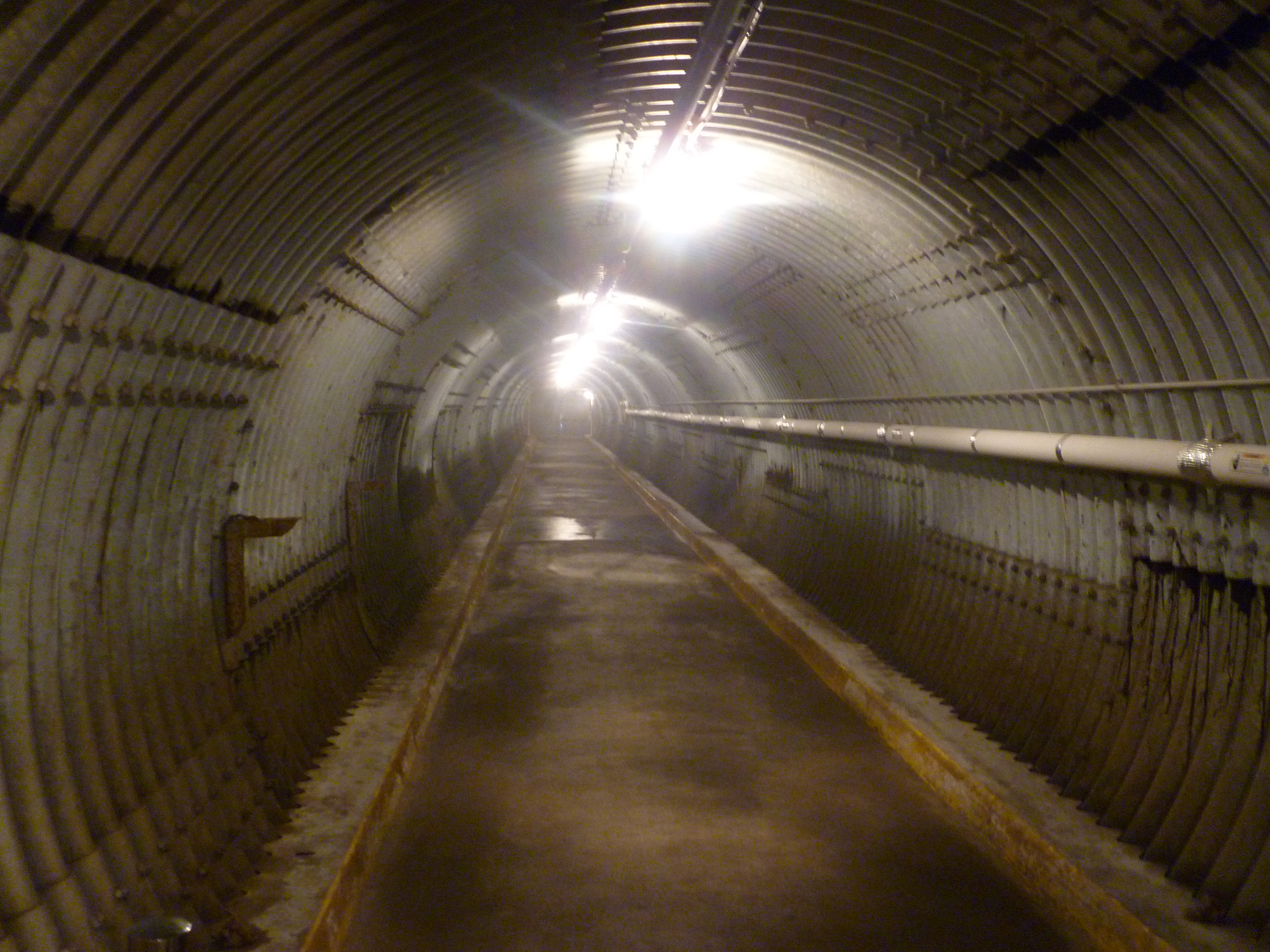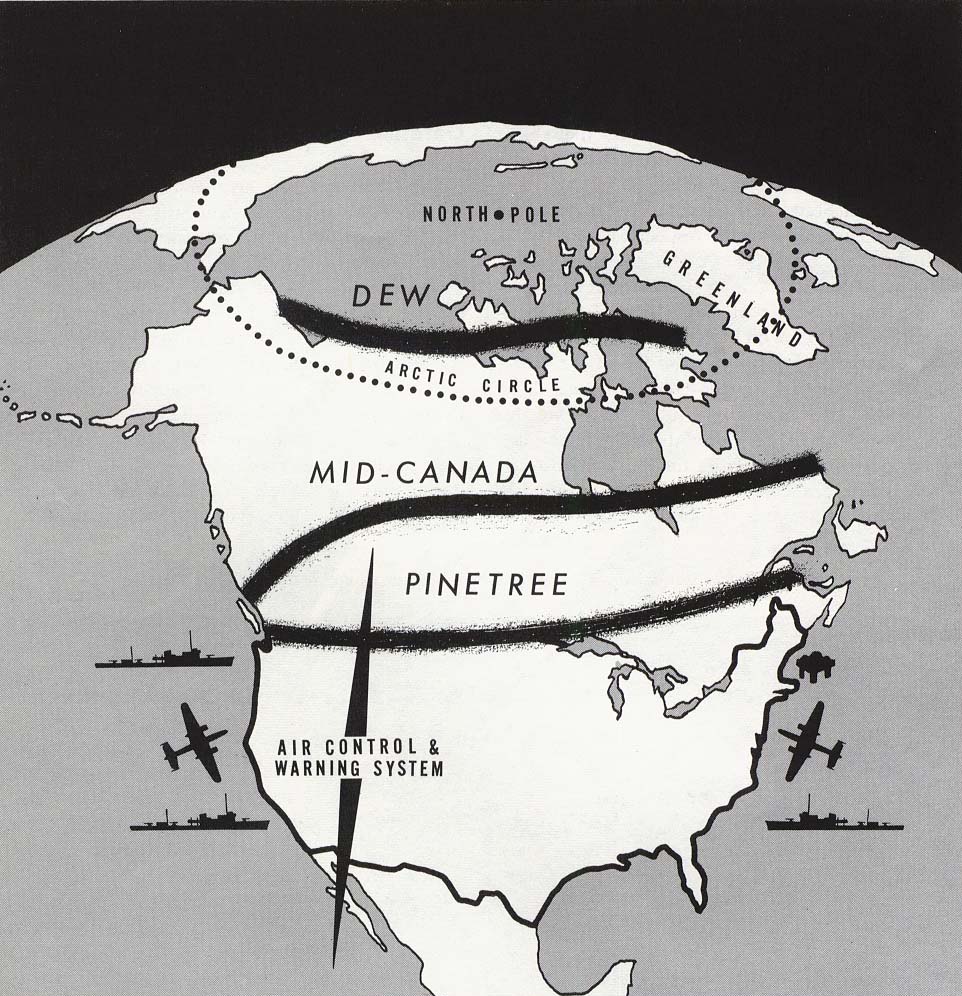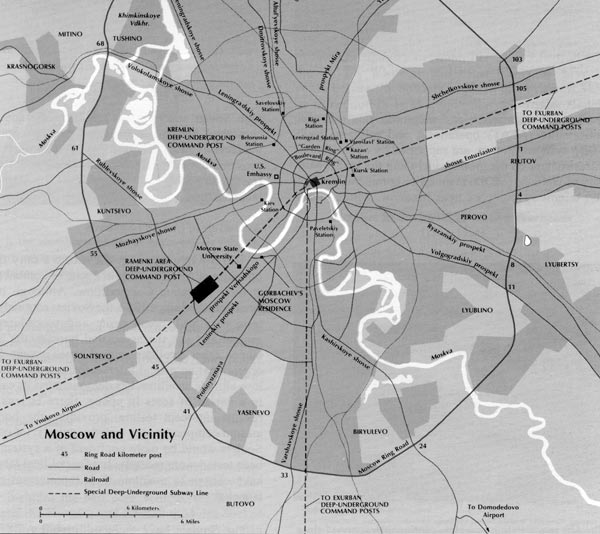|
Diefenbunker
The Diefenbunker, formerly known by its military designation, Canadian Forces Station Carp (CFS Carp), is a large underground four-storey reinforced concrete bunker and nuclear fallout shelter located in the rural area of Carp, Ontario approximately west of downtown Ottawa. Between 1957 and 1961, during the Cold War the Government of Canada led by then Prime Minister John Diefenbaker authorized the Diefenbunker to be designed and built as the Central Emergency Government Headquarters (CEGHQ Carp) in an attempt to ensure the continuity of government subsequent to a nuclear weapons attack by the Soviet Union. In 1994, CFS Carp was decommissioned and closed. In 1994, the Diefenbunker was designated a National Historic Site of Canada because it is considered the most important surviving Cold War site in Canada. The bunker is important as an engineering achievement and to the critical path method of planning used in its construction. In addition, the Diefenbunker is symbolic o ... [...More Info...] [...Related Items...] OR: [Wikipedia] [Google] [Baidu] |
Emergency Government Headquarters
Emergency Government Headquarters is the name given for a system of nuclear fallout shelters built by the Government of Canada in the 1950s and 1960s as part of continuity of government planning at the height of the Cold War. Situated at strategic locations across the country, the largest of these shelters are popularly referred to as "Diefenbunkers", a nickname coined by federal opposition politicians during the early 1960s. The nickname was derived from the last name of the Prime Minister of the day, John Diefenbaker, who authorized their construction. Over fifty facilities were built along several designs for various classes of service. Most of these facilities were built, often in great secrecy, at rural locations outside major cities across Canada. The majority of the larger facilities were two-story underground bunkers while the largest at CFS Carp had four floors; these facilities were designed to withstand a near-miss from a nuclear explosion. Each underground facility ... [...More Info...] [...Related Items...] OR: [Wikipedia] [Google] [Baidu] |
Carp, Ontario
Carp is a compact rural community in West Carleton-March Ward in the City of Ottawa, Ontario, Canada, located in the northwestern portion of the municipality on the Carp River. It is about from downtown Ottawa. Prior to amalgamation in 2001, Carp was located in the West Carleton Township. Carp is located in the Kanata—Carleton electoral riding. According to the Canada 2011 Census, 1,965 people lived in the area around Carp (Craig Sideroad/Murphy Sideroad on the north, former Township limits on the east, March Road on the south and Thomas Argue Road on the west) History By 1866, Carp was a post village with a population of 200 of the Township of Huntley on the Carp river, from Ottawa. The village contained three stores, workshops, three hotels, and a town hall. The Loyal Orange Lodge, No. 439, met at the Orange Hall Carp on the first Wednesday in each month. Citizens included J. W. Featherston, general merchant and postmaster. The village takes its name from the Carp ... [...More Info...] [...Related Items...] OR: [Wikipedia] [Google] [Baidu] |
Canada In The Cold War
Canada in the Cold War was one of the western powers playing a central role in the major alliances. It was an ally of the United States, but there were several foreign policy differences between the two countries over the course of the Cold War. Canada was a founding member of the North Atlantic Treaty Organization (NATO) in 1949, the North American Aerospace Defence Command (NORAD) in 1958, and played a leading role in United Nations peacekeeping operations—from the Korean War to the creation of a permanent UN peacekeeping force during the Suez Crisis in 1956. Subsequent peacekeeping interventions occurred in the Congo (1960), Cyprus (1964), the Sinai (1973), Vietnam (with the International Control Commission), Golan Heights, Lebanon (1978), and Namibia (1989–1990). Canada did not follow the American lead in all Cold War actions, sometimes resulting in tensions between the two countries. For instance, Canada refused to join the Vietnam War; in 1984, the last nuclear wea ... [...More Info...] [...Related Items...] OR: [Wikipedia] [Google] [Baidu] |
John Diefenbaker
John George Diefenbaker ( ; September 18, 1895 – August 16, 1979) was the 13th prime minister of Canada, serving from 1957 to 1963. He was the only Progressive Conservative party leader between 1930 and 1979 to lead the party to an election victory, doing so three times, although only once with a majority of the seats in the House of Commons. Diefenbaker was born in southwestern Ontario in the small town of Neustadt in 1895. In 1903, his family migrated west to the portion of the North-West Territories which would soon become the province of Saskatchewan. He grew up in the province and was interested in politics from a young age. After service in World War I, Diefenbaker became a noted criminal defence lawyer. He contested elections through the 1920s and 1930s with little success until he was finally elected to the House of Commons in 1940. Diefenbaker was repeatedly a candidate for the party leadership. He gained that position in 1956, on his third attempt. In 1957, ... [...More Info...] [...Related Items...] OR: [Wikipedia] [Google] [Baidu] |
Continuity Of Government
Continuity of government (COG) is the principle of establishing defined procedures that allow a government to continue its essential operations in case of a catastrophic event such as nuclear war. COG was developed by the British government before and during World War II to counter threats, such as that of the ''Luftwaffe'' bombing during the Battle of Britain. The need for continuity of government plans gained new urgency with nuclear proliferation. During and after the Cold War countries developed such plans to avoid (or minimize) confusion and disorder due to a power vacuum in the aftermath of a nuclear attack. In the US, COG is no longer limited to nuclear emergencies; the Continuity of Operations Plan was activated following the September 11 attacks. By country Canada Canada built numerous nuclear bunkers across the country, nicknamed " Diefenbunkers" in a play on the last name of then-Prime Minister John Diefenbaker. In 2016, the Privy Council Office made an agreement ... [...More Info...] [...Related Items...] OR: [Wikipedia] [Google] [Baidu] |
Bunker
A bunker is a defensive military fortification designed to protect people and valued materials from falling bombs, artillery, or other attacks. Bunkers are almost always underground, in contrast to blockhouses which are mostly above ground. They were used extensively in World War I, World War II, and the Cold War for weapons facilities, command and control centers, and storage facilities. Bunkers can also be used as protection from tornadoes. Trench bunkers are small concrete structures, partly dug into the ground. Many artillery installations, especially for coastal artillery, have historically been protected by extensive bunker systems. Typical industrial bunkers include mining sites, food storage areas, dumps for materials, data storage, and sometimes living quarters. When a house is purpose-built with a bunker, the normal location is a reinforced below-ground bathroom with fiber-reinforced plastic shells. Bunkers deflect the blast wave from nearby explosions to prevent ... [...More Info...] [...Related Items...] OR: [Wikipedia] [Google] [Baidu] |
Fallout Shelter
A fallout shelter is an enclosed space specially designated to protect occupants from radioactive debris or fallout resulting from a nuclear explosion. Many such shelters were constructed as civil defense measures during the Cold War. During a nuclear explosion, matter vaporized in the resulting fireball is exposed to neutrons from the explosion, absorbs them, and becomes radioactive. When this material condenses in the rain, it forms dust and light sandy materials that resemble ground pumice. The fallout emits Alpha particle, alpha and beta particles, as well as gamma rays. Much of this highly radioactive material falls to Earth, subjecting anything within the line of sight to radiation, becoming a significant radioactive contamination, hazard. A fallout shelter is designed to allow its occupants to minimize exposure to harmful fallout until radioactivity has Radioactive decay, decayed to a safer level. History North America During the Cold War, many countries built f ... [...More Info...] [...Related Items...] OR: [Wikipedia] [Google] [Baidu] |
Continuity Of Government
Continuity of government (COG) is the principle of establishing defined procedures that allow a government to continue its essential operations in case of a catastrophic event such as nuclear war. COG was developed by the British government before and during World War II to counter threats, such as that of the ''Luftwaffe'' bombing during the Battle of Britain. The need for continuity of government plans gained new urgency with nuclear proliferation. During and after the Cold War countries developed such plans to avoid (or minimize) confusion and disorder due to a power vacuum in the aftermath of a nuclear attack. In the US, COG is no longer limited to nuclear emergencies; the Continuity of Operations Plan was activated following the September 11 attacks. By country Canada Canada built numerous nuclear bunkers across the country, nicknamed " Diefenbunkers" in a play on the last name of then-Prime Minister John Diefenbaker. In 2016, the Privy Council Office made an agreement ... [...More Info...] [...Related Items...] OR: [Wikipedia] [Google] [Baidu] |
Ottawa
Ottawa (, ; Canadian French: ) is the capital city of Canada. It is located at the confluence of the Ottawa River and the Rideau River in the southern portion of the province of Ontario. Ottawa borders Gatineau, Quebec, and forms the core of the Ottawa–Gatineau census metropolitan area (CMA) and the National Capital Region (NCR). Ottawa had a city population of 1,017,449 and a metropolitan population of 1,488,307, making it the fourth-largest city and fourth-largest metropolitan area in Canada. Ottawa is the political centre of Canada and headquarters to the federal government. The city houses numerous foreign embassies, key buildings, organizations, and institutions of Canada's government, including the Parliament of Canada, the Supreme Court, the residence of Canada's viceroy, and Office of the Prime Minister. Founded in 1826 as Bytown, and incorporated as Ottawa in 1855, its original boundaries were expanded through numerous annexations and were ultimately ... [...More Info...] [...Related Items...] OR: [Wikipedia] [Google] [Baidu] |
Cuban Missile Crisis
The Cuban Missile Crisis, also known as the October Crisis (of 1962) ( es, Crisis de Octubre) in Cuba, the Caribbean Crisis () in Russia, or the Missile Scare, was a 35-day (16 October – 20 November 1962) confrontation between the United States and the Soviet Union, which escalated into an international crisis when American deployments of missiles in Italy and Turkey were matched by Soviet deployments of similar ballistic missiles in Cuba. Despite the short time frame, the Cuban Missile Crisis remains a defining moment in national security and nuclear war preparation. The confrontation is often considered the closest the Cold War came to escalating into a full-scale nuclear war. In response to the presence of American Jupiter ballistic missiles in Italy and Turkey, the failed Bay of Pigs Invasion of 1961, and Soviet fears of a Cuban drift towards China, Soviet First Secretary Nikita Khrushchev agreed to Cuba's request to place nuclear missiles on the island to deter a ... [...More Info...] [...Related Items...] OR: [Wikipedia] [Google] [Baidu] |
Communications And Electronics Branch
The Communications and Electronics Branch (french: Branche des communications et de l'électronique, link=no) is a personnel branch of the Canadian Armed Forces (CAF). The army component of the branch is designated the Royal Canadian Corps of Signals (french: Corps des transmissions royal du Canada, link=no). History Major Wallace Bruce Matthews Carruthers (13 February 1863 – 21 October 1910) was the founder of the Canadian Signalling Corps, forerunner of the Royal Canadian Corps of Signals and the Communications and Electronics Branch. In the 1968 unification of the Canadian Forces, functional similar components of the Royal Canadian Navy, Canadian Army and Royal Canadian Air Force were combined into the new Communications and Electronics Branch. During the Boer War, Carruthers noted the importance of tactical signaling in a successful campaign. Observing the employment of heliographs, semaphore flags and lamps, he realized there was a need for a unit to provide proper traini ... [...More Info...] [...Related Items...] OR: [Wikipedia] [Google] [Baidu] |
Public Safety Canada
Public Safety Canada (PSC; french: Sécurité publique Canada, SPC; PSP), legally incorporated as the Department of Public Safety and Emergency Preparedness (PSEPC), is the department of the Government of Canada responsible for (most) matters of public safety, emergency management, national security, and emergency preparedness in Canada. The department is responsible to Parliament through the minister of public safety (Marco Mendicino) and minister of emergency preparedness ( Bill Blair). History Prior to 1988, the agency responsible for the "public safety" portfolio was known as Emergency Preparedness Canada, which was created under the auspices of the Department of National Defence. In 1988, the Department of Public Safety and Emergency Preparedness was established by the ''Emergency Preparedness Act''. With the purpose of creating a single entity with responsibility for ensuring public safety in Canada, the Department of Public Safety and Emergency Preparedness was created ... [...More Info...] [...Related Items...] OR: [Wikipedia] [Google] [Baidu] |






.jpg)
